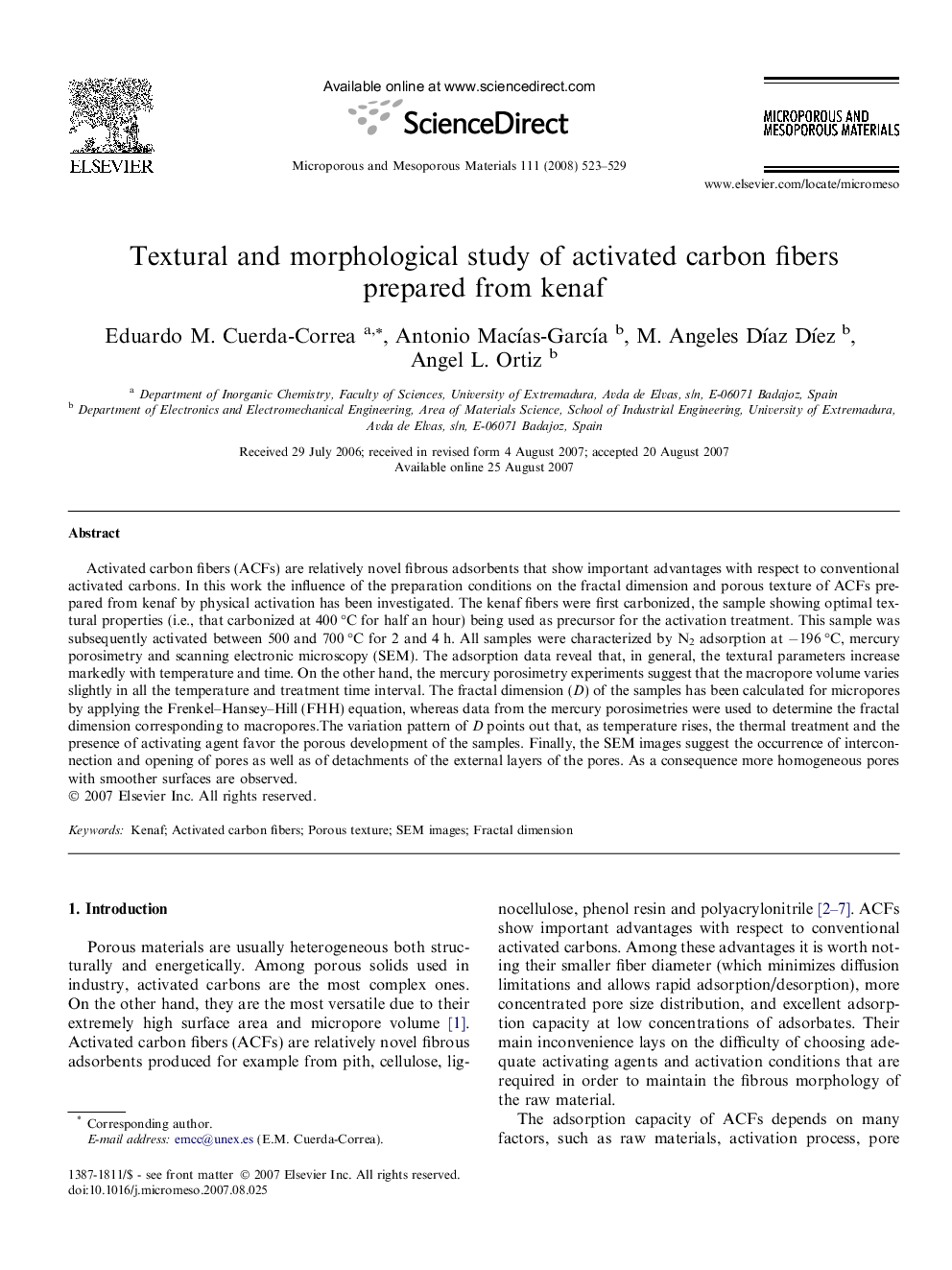| Article ID | Journal | Published Year | Pages | File Type |
|---|---|---|---|---|
| 75751 | Microporous and Mesoporous Materials | 2008 | 7 Pages |
Activated carbon fibers (ACFs) are relatively novel fibrous adsorbents that show important advantages with respect to conventional activated carbons. In this work the influence of the preparation conditions on the fractal dimension and porous texture of ACFs prepared from kenaf by physical activation has been investigated. The kenaf fibers were first carbonized, the sample showing optimal textural properties (i.e., that carbonized at 400 °C for half an hour) being used as precursor for the activation treatment. This sample was subsequently activated between 500 and 700 °C for 2 and 4 h. All samples were characterized by N2 adsorption at −196 °C, mercury porosimetry and scanning electronic microscopy (SEM). The adsorption data reveal that, in general, the textural parameters increase markedly with temperature and time. On the other hand, the mercury porosimetry experiments suggest that the macropore volume varies slightly in all the temperature and treatment time interval. The fractal dimension (D) of the samples has been calculated for micropores by applying the Frenkel–Hansey–Hill (FHH) equation, whereas data from the mercury porosimetries were used to determine the fractal dimension corresponding to macropores.The variation pattern of D points out that, as temperature rises, the thermal treatment and the presence of activating agent favor the porous development of the samples. Finally, the SEM images suggest the occurrence of interconnection and opening of pores as well as of detachments of the external layers of the pores. As a consequence more homogeneous pores with smoother surfaces are observed.
